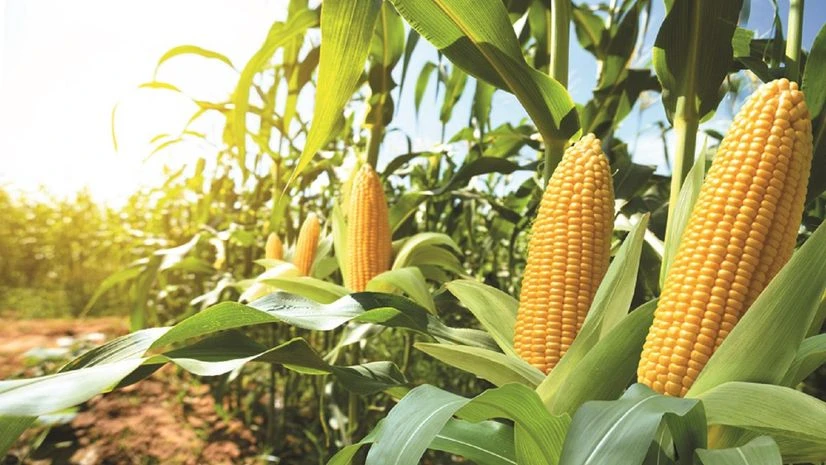
S. Chenna Kesava Reddy1, M. Sainath Rao2, Meghana Rao3, BK. Sandeep Reddy4
1Head (Research & development -Department), Kayne Bio-Sciences Pvt Ltd (Kamala Farms)
2 Market Research Intern, Kayne Bio-Sciences Pvt Ltd (Kamala Farms)
3 CEO, Kayne Bio-Sciences Pvt Ltd (Kamala Farms), Hyderabad
4 Co-Founder, CSO, Kayne Bio-Sciences Pvt Ltd (Kamala Farms), Hyderabad
Corresponding Author Mail ID: chenna2nalas@gmail.com
Introduction to Curcuma Longa
Curcuma longa, commonly known as turmeric, stands as one of the most revered spices and medicinal herbs in global agriculture. This golden rhizome, belonging to the Zingiberaceae family, has transcended its traditional culinary boundaries to emerge as a cornerstone of modern nutraceutical and pharmaceutical industries. The ancient “golden spice” has captured contemporary agricultural innovation through hydroponic cultivation methods, offering unprecedented opportunities for enhanced curcumin production and sustainable farming practices.
Turmeric’s significance extends far beyond its vibrant yellow pigmentation. The rhizome contains over 300 chemical constituents, with curcumin being the primary bioactive compound responsible for its therapeutic properties. As global demand for natural health solutions intensifies, hydroponic turmeric cultivation presents a revolutionary approach to maximizing both yield and medicinal potency while addressing traditional farming challenges.
Medicinal Uses and Therapeutic Properties
The medicinal applications of Curcuma longa have been documented for over 4,000 years, establishing it as a fundamental component of Ayurvedic, Traditional Chinese Medicine, and contemporary integrative healthcare systems. Curcumin, the primary bioactive compound, exhibits powerful anti- inflammatory, antioxidant, antimicrobial, and hepatoprotective properties. Modern research has validated its efficacy in managing arthritis, cardiovascular diseases, diabetes, digestive disorders, and various inflammatory conditions.
The therapeutic potential of turmeric extends to neuroprotective effects, with studies indicating its role in supporting cognitive function and potentially mitigating neurodegenerative diseases. Its immunomodulatory properties have gained particular attention in recent years, positioning turmeric as a valuable natural immune system enhancer. The compound’s bioavailability challenges have led to innovative extraction and formulation techniques, making hydroponic cultivation increasingly valuable for producing high-curcumin content rhizomes.
Flavoring Properties and Culinary Significance
Turmeric’s distinctive earthy, slightly bitter flavor profile with subtle peppery undertones has made it indispensable in global cuisines. The spice imparts a warm, golden color to dishes while contributing complex flavor dimensions that complement both vegetarian and non-vegetarian preparations. Its essential oil content, comprising compounds like ar-turmerone, α-turmerone, and β-turmerone, contributes to its characteristic aroma and taste intensity.
In culinary applications, turmeric serves multiple functions beyond flavoring. It acts as a natural preservative due to its antimicrobial properties, extends shelf life of food products, and enhances digestibility. The spice’s ability to bind with fats makes it particularly effective in oil-based preparations, while
its water-soluble components contribute to the flavor profile of broths and liquid- based dishes.
Global and Indian Production Landscape
India produced over 75 per cent of the global turmeric production in 2022- 23, cementing its position as the world’s largest turmeric producer and exporter. During fiscal year 2023, the volume of turmeric production in India accounted to
1.23 million metric tons, demonstrating the country’s agricultural dominance in this sector. Maharashtra, with over 278 thousand metric tons, was the leading producer of turmeric in India during fiscal year 2023, followed by Telangana and Karnataka. The production distribution across states reflects varying agro- climatic conditions and traditional cultivation practices. Key producing states include Andhra Pradesh, Tamil Nadu, Assam, West Bengal, Gujarat, and Meghalaya, each contributing unique varieties adapted to local conditions.
The area under turmeric cultivation has expanded significantly from 2020 to 2025, with productivity improvements driven by better varieties, improved
agricultural practices, and technological interventions. The National Turmeric Board aims to enhance India’s turmeric production to 20,00,000 tonnes in five years, indicating ambitious growth targets for the sector. Projections for 2030 suggest continued expansion, with focus shifting toward quality enhancement and value- added processing.
Species Diversity and Curcumin Content Analysis
The genus Curcuma encompasses numerous species, each offering distinct characteristics and applications. Curcuma longa remains the most commercially significant species, containing 2-8% curcumin in its rhizomes. Curcuma zedoaria (white turmeric or zedoary) contains lower curcumin levels but offers unique medicinal properties, particularly for digestive disorders and respiratory ailments.
Curcuma aromatica, known as jangli haldi or wild turmeric, contains higher essential oil content compared to C. longa, making it valuable for cosmetic and therapeutic applications. Curcuma caesia (black turmeric), listed in the IUCN
conservation list, represents one of the rarest species with exceptional medicinal properties. This species contains higher levels of curcumin and unique compounds not found in common turmeric varieties.
Among these species, C. longa demonstrates the highest curcumin concentration in most commercial varieties, making it the preferred choice for pharmaceutical and nutraceutical applications. The species’ adaptability to various growing conditions and its established market demand further reinforce its commercial significance. Each species finds specific applications in traditional medicine systems, with C. caesia being particularly valued in tribal medicine practices for its potent anti-inflammatory and antimicrobial properties.
Geographic Indication and Premium Varieties
India’s turmeric industry benefits from geographic indication (GI) status for several premium varieties, most notably Madras turmeric and Erode turmeric from Tamil Nadu. These GI-tagged varieties command premium prices in international markets due to their superior curcumin content, distinct flavor profiles, and consistent quality parameters. Madras turmeric, characterized by its deep orange color and high curcumin content (7-12%), represents the gold standard for export quality turmeric.
Erode turmeric, another GI-tagged variety, demonstrates exceptional processing qualities with minimal fiber content and intense coloration. These geographic designations protect traditional cultivation practices while ensuring quality consistency and origin authenticity. The GI status has enabled farmers in these regions to access premium markets and receive better price realization for their produce.
Varietal Spectrum and Curcumin Profiles
India’s turmeric diversity encompasses over 30 commercially important varieties, each bred for specific traits and regional adaptations. Rajendra Sonia stands out with exceptional 8.44% curcumin content, making it highly sought after for pharmaceutical applications. The Alleppey Supreme variety, renowned for its intense color and consistent quality, remains a preferred choice for export markets.
Roma and Suroma varieties offer balanced curcumin levels (5-7%) with good processing characteristics, while Prabha and Pratibha demonstrate excellent field performance with disease resistance. Sugana, Suvarna, and Sona varieties represent improved selections with enhanced productivity and uniform rhizome characteristics. Traditional varieties like Sudharshana, Sobha, and Krishna
continue to hold significance in regional markets due to their adapted traits and established cultivation practices.
Modern breeding programs have developed varieties like Kanthi, Megha, and Varna with specific industrial applications. Sugandham and Kedaram varieties focus on enhanced essential oil content for flavor industry applications. Research varieties like Suranjana, Ranga, and Rasmi represent ongoing improvement efforts. The IISR Pragati variety demonstrates scientific breeding achievements with balanced agronomic and quality traits. Lakadong turmeric from Meghalaya, with its exceptionally high curcumin content (7-12%), represents indigenous excellence in turmeric biodiversity.
Production Technology and Cultivation Management
Successful turmeric cultivation requires comprehensive understanding of soil, climate, and management practices. The crop thrives in well-drained, fertile soils with pH ranging from 5.5 to 7.5, requiring adequate organic matter content for optimal rhizome development. Climate requirements include warm, humid conditions with temperatures between 20-30°C and annual rainfall of 1000- 1500mm, though supplemental irrigation becomes crucial during dry periods.
Water management involves maintaining consistent soil moisture throughout the growing period, with particular attention during rhizome development phases. Weed
management typically employs integrated approaches combining pre-emergence herbicides, mulching, and mechanical cultivation. Nutrient management focuses on balanced NPK application (40:60:120 kg/ha) with emphasis on potassium for rhizome quality enhancement. Organic amendments through farmyard manure, compost, and biofertilizers improve soil health and sustainable production.
Mulching practices using organic materials like paddy straw, sugarcane trash, or green leaves help conserve moisture, suppress weeds, and maintain soil temperature. Intercropping with compatible crops like ginger, chili, or legumes optimizes land utilization while providing additional income streams. Crop specifications include proper seed rhizome selection, optimal planting density (25-30 cm spacing), and timely cultural operations for maximum yield realization.
Current Market Demand and Value-Added Products
The global turmeric market continues experiencing robust growth, driven by increasing consumer awareness of natural health products and expanding applications in food, pharmaceutical, and cosmetic industries. The average price of turmeric in Chennai, India stood at about 109 rupees per kilogram in fiscal year 2024, reflecting strong market demand and quality premiums.
Indian states have developed diverse value-added turmeric products, including turmeric powder, oleoresins, essential oils, curcumin extracts, and standardized pharmaceutical preparations. Maharashtra and Tamil Nadu lead in processing infrastructure development, with modern facilities for steam distillation, solvent extraction, and standardized product manufacturing. Kerala and Karnataka focus on organic turmeric processing and specialty products for export markets.
Processing technologies encompass traditional methods like boiling, drying, and grinding, as well as modern techniques including freeze-drying, supercritical extraction, and nano-encapsulation for enhanced bioavailability. Value addition extends to functional foods, dietary supplements, natural colorants, and cosmetic formulations, creating multiple revenue streams for producers and processors.
Hydroponic Turmeric Cultivation Revolution
Hydroponic turmeric cultivation represents a paradigm shift in traditional farming approaches, offering solutions to conventional agriculture challenges while maximizing quality and yield parameters. Hydroponically grown turmeric contains more than 5% curcumin whereas 2-3% in traditional growing methods and contains 5% essential oils, demonstrating the technology’s potential for quality enhancement.
The hydroponic system eliminates soil-borne diseases, provides precise nutrient control, and enables year-round production regardless of seasonal limitations. Farmers using hydroponic methods have achieved yields up to 8.17
kg from a single grow bag, compared to conventional soil yields of 500-700g per plant, representing an eight-fold increase in productivity.
Hydroponic turmeric cultivation utilizes soilless growing media such as coconut coir, perlite, vermiculite, or specialized substrates that provide optimal root zone conditions. The system enables precise control over pH, electrical conductivity, and nutrient availability, resulting in consistent quality and enhanced bioactive compound concentration. Climate-controlled environments further optimize growth conditions, reducing pest and disease pressure while maximizing photosynthetic efficiency.
The technology addresses water scarcity concerns through efficient nutrient solution recycling and minimal water wastage. Urban and peri-urban cultivation becomes feasible through vertical farming systems and controlled environment agriculture. Investment requirements, though initially higher, provide rapid returns through premium quality produce, consistent yields, and reduced input costs over time.
Hydroponic turmeric cultivation represents the future of sustainable, quality-focused agriculture, combining traditional wisdom with modern technology to meet growing global demand for high-curcumin, therapeutically potent turmeric products. This innovative approach positions India to maintain its leadership in global turmeric markets while addressing environmental sustainability and farmer profitability concerns.
References:
- Kumar, N. (2019). Introduction to Spices, Plantation Crops, Medicinal & Aromatic Plants. Medtech Science Express, New Delhi, India.
- Farooqi, A.A., & Sreeramu, B.S. (2004). Cultivation of Medicinal and Aromatic Crops (Revised Edition). Universities Press, Hyderabad, India. 515 pages.
- Aggarwal, B.B., Yuan, W., Li, S., & Gupta, S.C. (2013). Curcumin-free turmeric exhibits anti-inflammatory and anticancer activities: Identification of novel components of turmeric. Molecular Nutrition & Food Research, 57(9), 1529-1542. doi:10.1002/mnfr.201200838
- Sasikumar, B. (2005). Genetic resources of Curcuma: diversity, characterization and utilization. Plant Genetic Resources, 3(2), 230-251. doi:10.1079/PGR200574
- Spices Board India. (2023). Annual Report 2022-23: Production and Export Statistics of Spices. Ministry of Commerce and Industry, Government of India. Retrieved from www.indianspices.com
Prasath, D., Kandiannan, K., Leela, N.K., Prasath, R., & Sasikumar B. (2018). Comparison of the agronomic and quality characteristics of traditional and improved turmeric (Curcuma longa L.) cultivars in a humid tropical climate of India. Industrial Crops and Products, 112, 491-502. doi:10.1016/j.indcrop.2017.12.051
Velayudhan, K.C., Dikshit, N., & Nizar, M.A. (2012). Ethnobotany of turmeric (Curcuma longa L.). Indian Journal of Traditional Knowledge, 11(4), 607-614. Retrieved from nopr.niscair.res.in
Singh, S., Sharma, A., & Kumar, R. (2021). Hydroponic cultivation of turmeric: A sustainable approach for enhanced curcumin production and quality improvement. Journal of Applied Horticulture, 23(2), 145-152.






